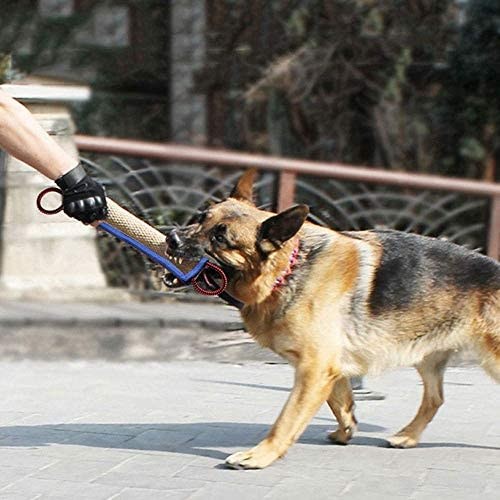Is it bad to play tug with your dog?
This is one of the most frequent questions I am asked regarding general dog behavior. The answer is – well, it depends!
Why do dogs love tug? Tug is a fun, energetic, aerobic activity and it is completely normal. Dogs love to play tug with other dog friends and humans alike. It can be a great way to exercise your dog and an even better way to practice impulse control and training.
Will playing tug with my dog cause him to become aggressive or encourage aggressive behavior? No and maybe. Playing tug will not cause aggression. However, playing tug with a dog who is built for competing and has a need to be in control can be problematic. Dogs with these personality traits can use tug to practice competing with their humans. These dogs like to play to win and rarely tire of the game. We humans tire quickly and simply let go. Rarely does the dog want to win and keep the toy as a trophy rather he wants to continue the competitive play. Once we let go, the dog often continues to offer the toy to us in order to keep the competition going. This sequence can reinforce competitive behaviors and weaken your dog’s training compliance with you.
How can I safely and appropriately play tug with my dog? Tug can be a wonderful game to play with your dog when it encourages impulse control and compliance. Your dog should wait until you offer the toy to him. You can ask for a sit or a down first, but most importantly, your dog should not grab the toy from your hands. Continue to pull the toy away from the dog each time he moves forward to get ahold of the toy. You should be able to hold the toy in a relaxed position in your hands even if that is in front of your dog. Your dog should learn to wait for permission or wait until you give him the toy before engaging in the game.
You can then play a hearty game of tug by moving the toy from side to side. I like to have the side to side motion with the toy instead of simply providing resistance. Your dog needs to have a “drop” command trained for the next step. Prior to asking your dog to drop the toy, I stop moving the toy from side to side and then move my hands closer on the toy on either side of the dog’s mouth. I don’t leave any room on the toy available to regrip.
I then say “drop” and move my hands toward the sides of the dog’s mouth until he drops the toy (if this isn’t effective, please contact us to schedule an appointment for help teaching a reliable “drop” command). Once the dog opens his mouth and allows me to have full possession of the toy, I begin again by making the dog wait before taking the toy. This is a great training exercise.
What if it seems like my dog is becoming too competitive or wound up? It may be possible that this sort of activity is just too competitive for your dog. If it frustrates your dog even more when you try to put rules to the game, then you shouldn’t play tug with your dog.
You should contact a dog behavior specialist for help in this situation. There may be other issues that are complicating this game. A behavior professional can assess your dog’s behavior and personality and advise whether or not this is an appropriate way to play with your dog. He or she may also advise specific ways to play a modified version of this game as well as a tailored way to teach the “drop” command to your dog.
Sam Freeman, CPDT-KSA, is the president and owner of Pet Behavior Solutions and Edu-Care for Dogs in Scottsdale. She is the creator of the Core Behavior Assessment, which is the behavior evaluation program used by many animal shelters and animal control agencies in Arizona. Freeman is certified through the Certification Council for Professional Dog Trainers and has completed specialized education and training in psychology, learning theory, ethology, family counseling, behavior modification techniques, aggression, canine and feline behavior issues, and grief counseling.



